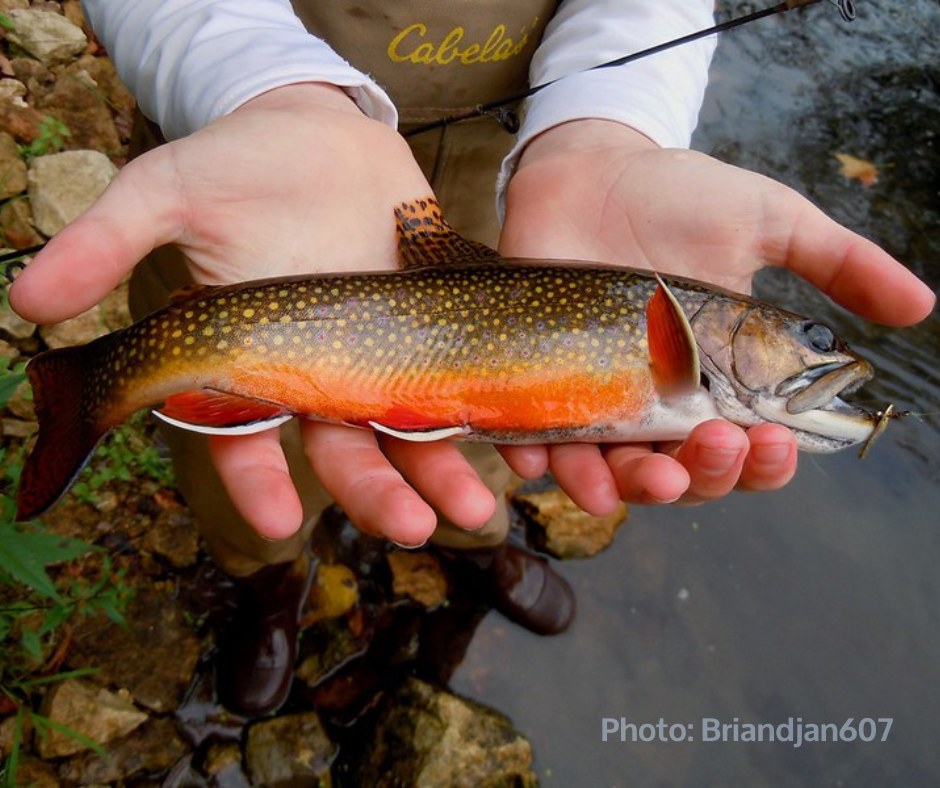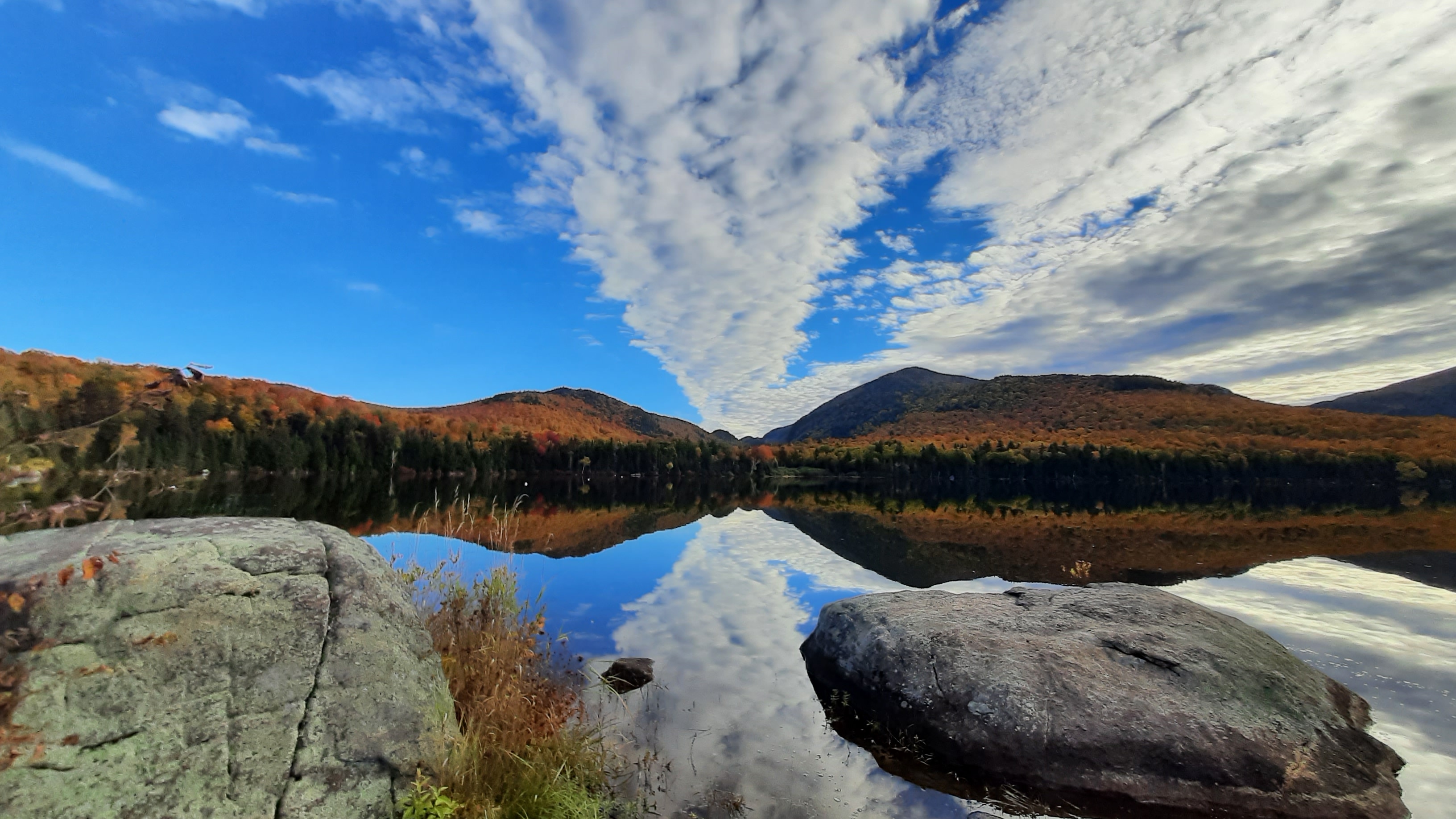
Rewilding the Adirondack Way
By John Davis - Adirondack Council Rewilding Advocate
Friday, April 12, 2024
New York state, perhaps half-unwittingly, set a global example of rewilding a century ago when it drew a “blue line” around much of the state’s North Country in the geologic uplift known as the Adirondacks, and declared that henceforth, lands acquired by the state therein would be kept “forever wild.” Decades later, partial protection was given to much of the private land within New York’s 6 million-acre Adirondack Park with the creation of the Adirondack Park Agency. Arguably, the creation of Adirondack Park marks the first time in modern history that an industrialized people has decided to give a large area back to nature. To complete this rewilding success story, however, will require reconnecting the Park to surrounding wildlands and restoring missing species.
 Rewilding is a young word for an old idea – letting nature be. Rewilding basically means helping nature heal, then allowing it to function and evolve independent of human interference; or giving the land back to wildlife and wildlife back to the land. The late great wildlands champion Dave Foreman, who coined the term ‘rewilding’ three decades ago, distilled it down to two words: wilderness recovery. However we define the term, it’s been happening in Adirondack Park for more than a century, but the work is far from done. We are too isolated, and deficient in keystone species, and susceptible to human-caused climate chaos to thrive thru the stormy centuries ahead. Following are five of the basic areas of work to complete Adirondack Park and keep it relatively immune (as "A Wild Island of Hope," to use early Adirondack Council leader Gary Randorf’s apt phrase) from the global extinction crisis industrial humans have wrought:
Rewilding is a young word for an old idea – letting nature be. Rewilding basically means helping nature heal, then allowing it to function and evolve independent of human interference; or giving the land back to wildlife and wildlife back to the land. The late great wildlands champion Dave Foreman, who coined the term ‘rewilding’ three decades ago, distilled it down to two words: wilderness recovery. However we define the term, it’s been happening in Adirondack Park for more than a century, but the work is far from done. We are too isolated, and deficient in keystone species, and susceptible to human-caused climate chaos to thrive thru the stormy centuries ahead. Following are five of the basic areas of work to complete Adirondack Park and keep it relatively immune (as "A Wild Island of Hope," to use early Adirondack Council leader Gary Randorf’s apt phrase) from the global extinction crisis industrial humans have wrought:
- Protect and restore broad wildlife corridors – wildways – within and beyond Adirondack Park. These wildways include the Adirondack to Algonquin axis (A2A), linking New York’s greatest park with southern Ontario’s greatest park; Split Rock Wildway, linking Lake Champlain with the High Peaks (and a subset of A2A); Adirondack to Tug Hill nexus, across the Black River Valley; the Adirondacks to Green Mountains connection, through the Southern Lake Champlain Valley; the Mohawk links between Adirondack and Catskill Parks; and riparian buffers (existing or proposed) along waterways throughout our region.
- Restore or assist missing or diminished species. Ecological studies and widespread education should precede active reintroduction programs. The missing terrestrial keystone species in the eastern United States are puma and wolf; and these guardian species may thrive here in Adirondack Park better than elsewhere in the East. For wolves, our near-term goals should include protecting the wildlife corridors – especially A2A – they need to recolonize and thrive; gaining some degree of protection for coyotes, partly for the good of coyotes themselves but also because as long as there’s an open killing season on coyotes, any wolves lucky enough to make it to New York are likely to be shot; and building strong public support for the only predator likely to keep the moose population healthy. We should also study species that may have been in our region in small numbers or might need to be in our region to track their climate envelope northward as climate warms. Such species might include American Chestnut, temperate zone oaks, bison, elk, Hognose Snake, and Mud Puppy. Aquatic species here but needing help may include cold water fish, particularly Brook and Lake Trout, slow-reproducing fish like Lake Sturgeon (native but declining in Lake Champlain), and diadromous fish like American Eel and American Shad.
- Push for critical Forest Preserve additions and getting at least half the Park fully protected as Forever Wild. The simple 3:2:1 formula for the Park – 3 million acres of Forest Preserve, 2 million acres of conservation easements, and 1 million acres of carefully zoned private lands –is a good goal. Part of that goal, though, should be conservation easements strong enough (unlike most DEC-held easements so far) to truly protect forests, waterways, and wildlife. Here we might think as much about focal ecosystems as focal species, and those critical ecosystems will include various wetland types.
- Make human-built infrastructure more permeable to wildlife movement at the same time we make it more durable in the face of climate chaos. This means installing safe wildlife crossings on busy roads and removing or modifying dams and culverts that block aquatic wildlife movement. Conservationists are supporting the wildlife crossings bill recently introduced in the NY legislature; and we should also support the federal wildlife crossings bill.
- Restore riparian zones and aquatic ecosystem connectivity, sometimes by removing derelict dams and often by replacing undersized culverts. Focal species here include the afore-mentioned species (for many terrestrial species disproportionately use riparian and wetland habitats) plus Brook and Lake Trout, Landlocked Atlantic Salmon, American Eel, and beaver.
 In sum, the Adirondack Park is the greatest rewilding story in North America, but it is far from complete. Our forebears did heroic work to establish the Park. Now we must realize its potential by restoring habitat connections to surrounding wildlands and welcoming home missing species. We’ll know this great rewilding experiment is successful when we can follow in deep snow the tracks of a wolf family following the tracks of a mother puma who has taken down an old elk to feed her cubs, with abundant Brook Trout plying the waters below the frozen surface of the nearby stream, while a Great Gray Owl hoots in the old-growth forest overhead.
In sum, the Adirondack Park is the greatest rewilding story in North America, but it is far from complete. Our forebears did heroic work to establish the Park. Now we must realize its potential by restoring habitat connections to surrounding wildlands and welcoming home missing species. We’ll know this great rewilding experiment is successful when we can follow in deep snow the tracks of a wolf family following the tracks of a mother puma who has taken down an old elk to feed her cubs, with abundant Brook Trout plying the waters below the frozen surface of the nearby stream, while a Great Gray Owl hoots in the old-growth forest overhead.
Looking for more ways to get involved with the Council?




